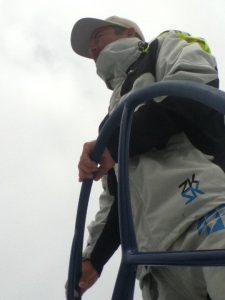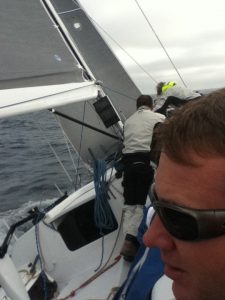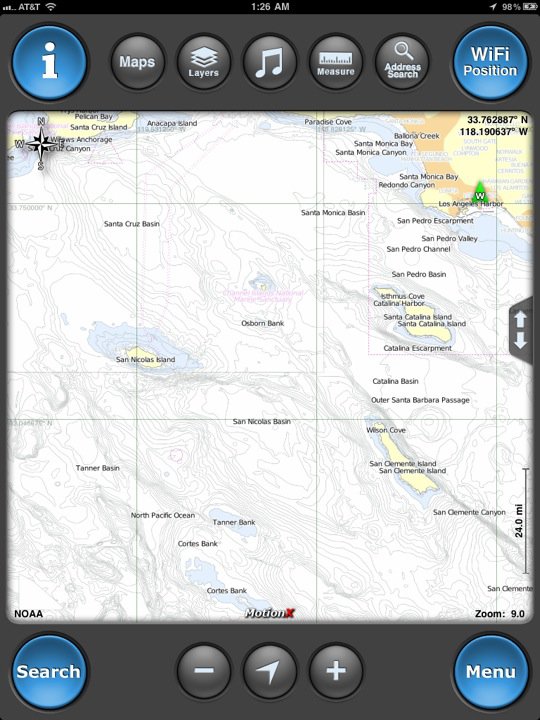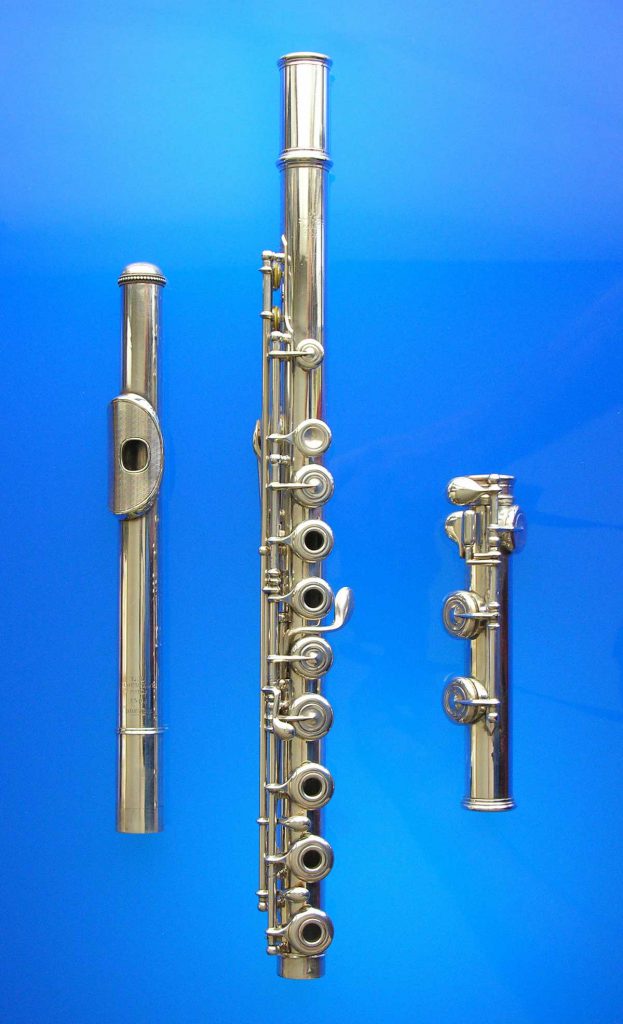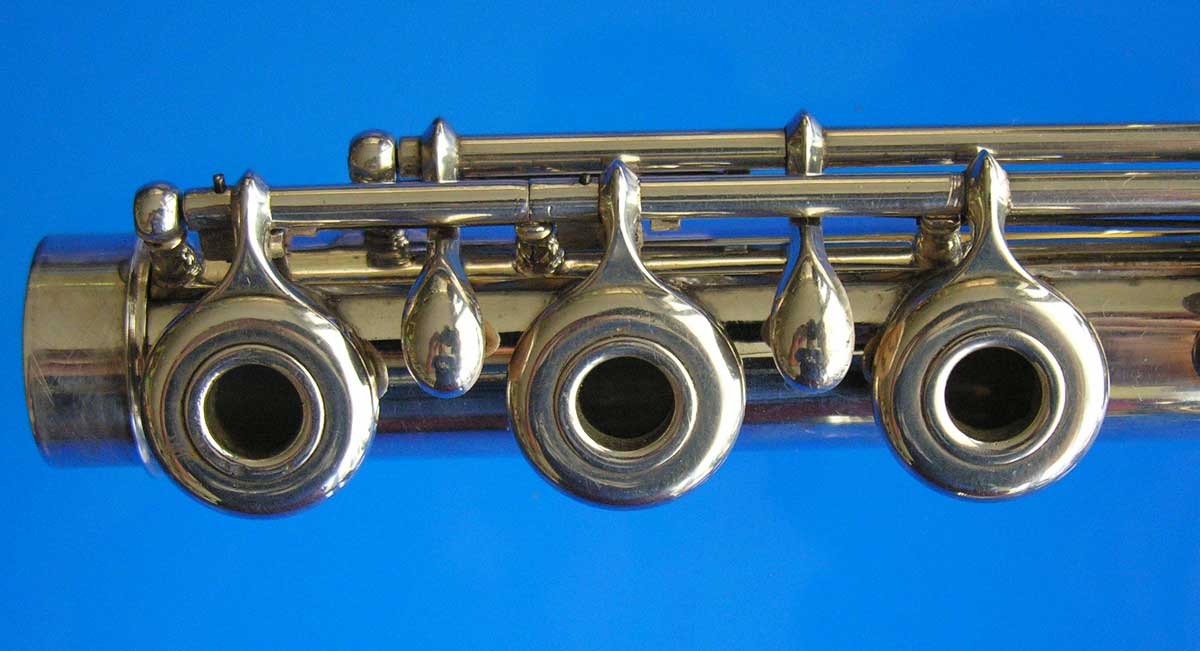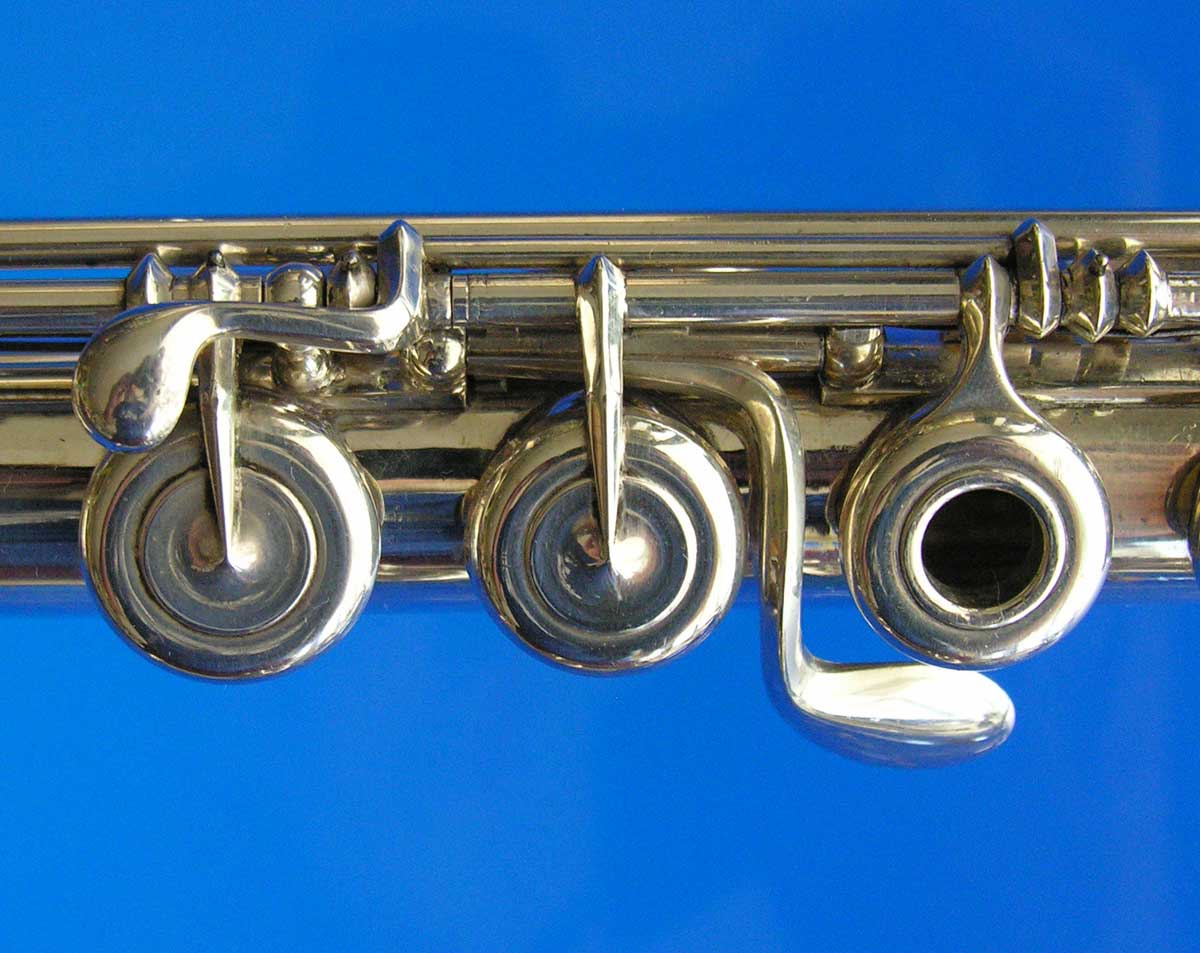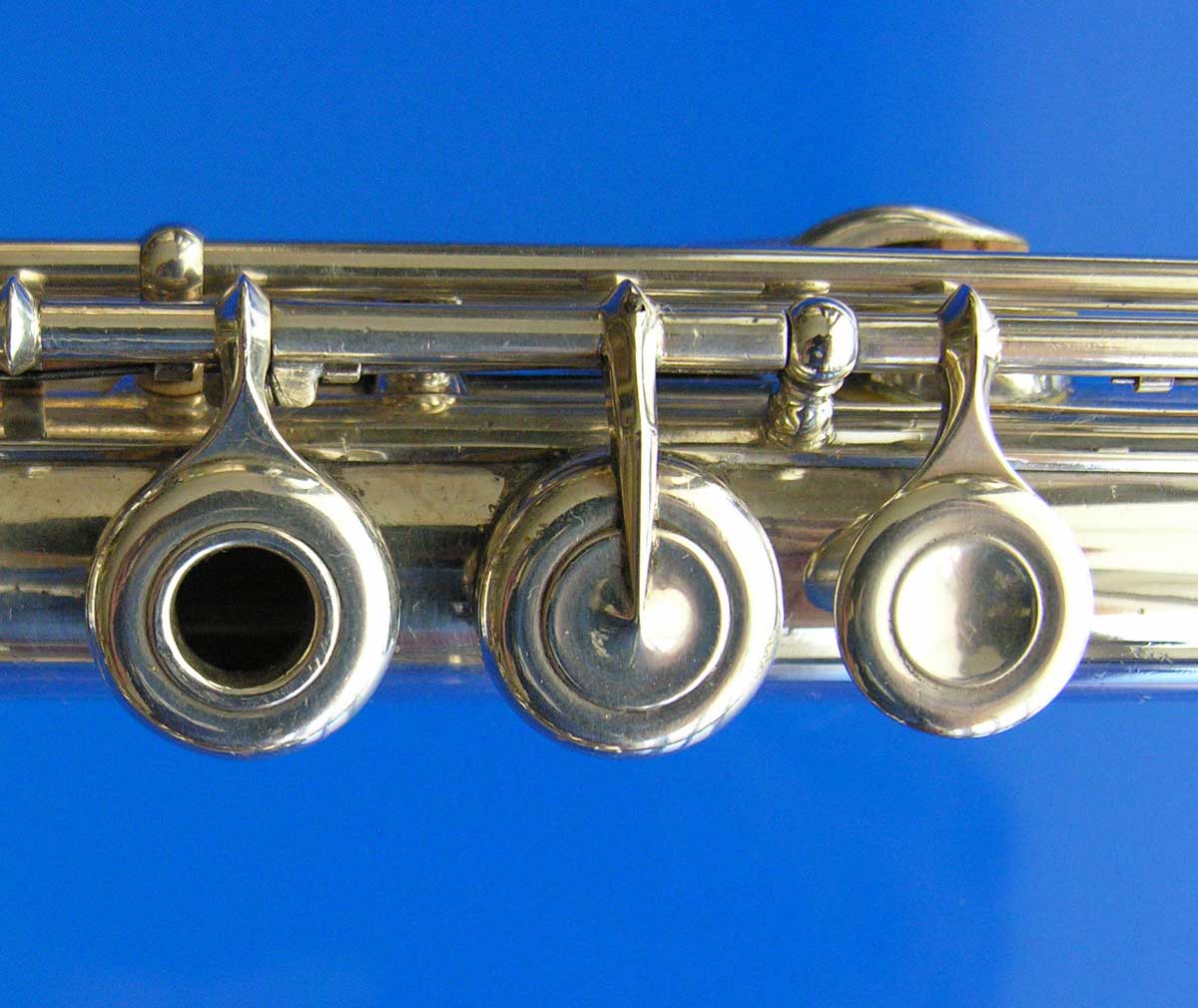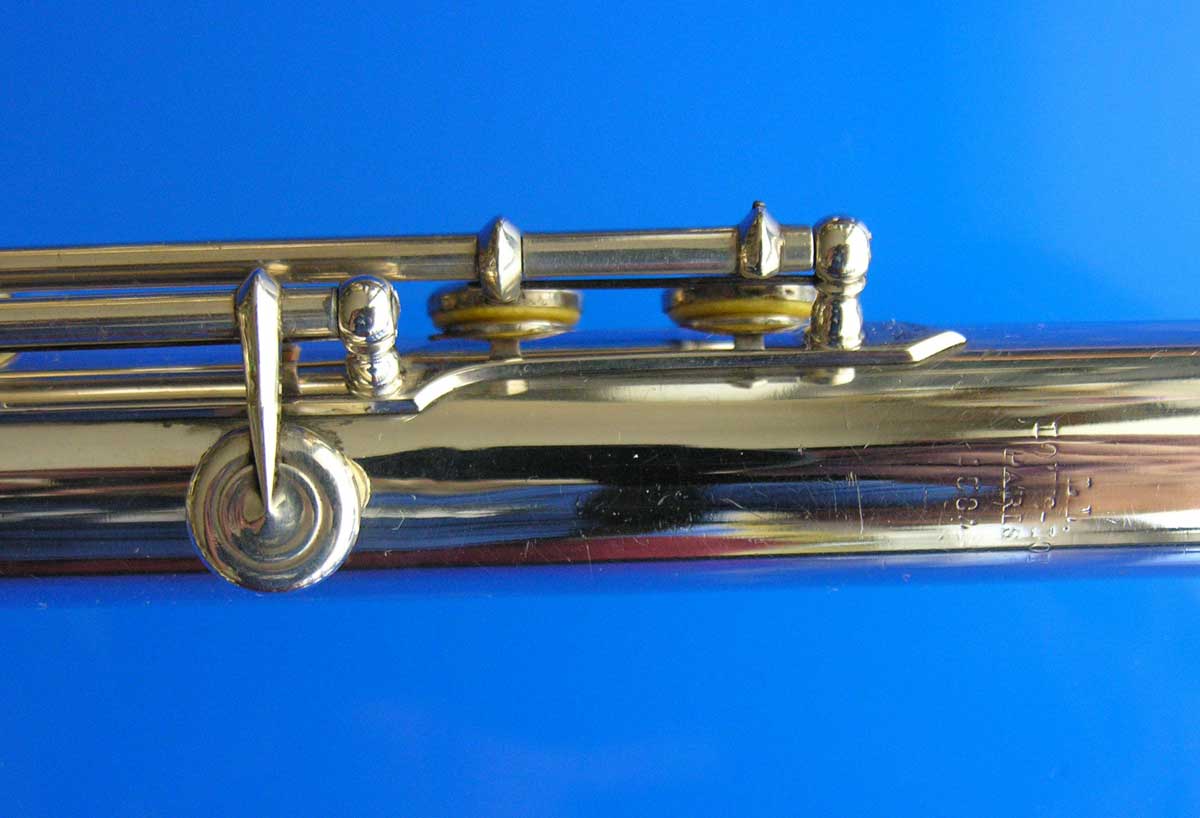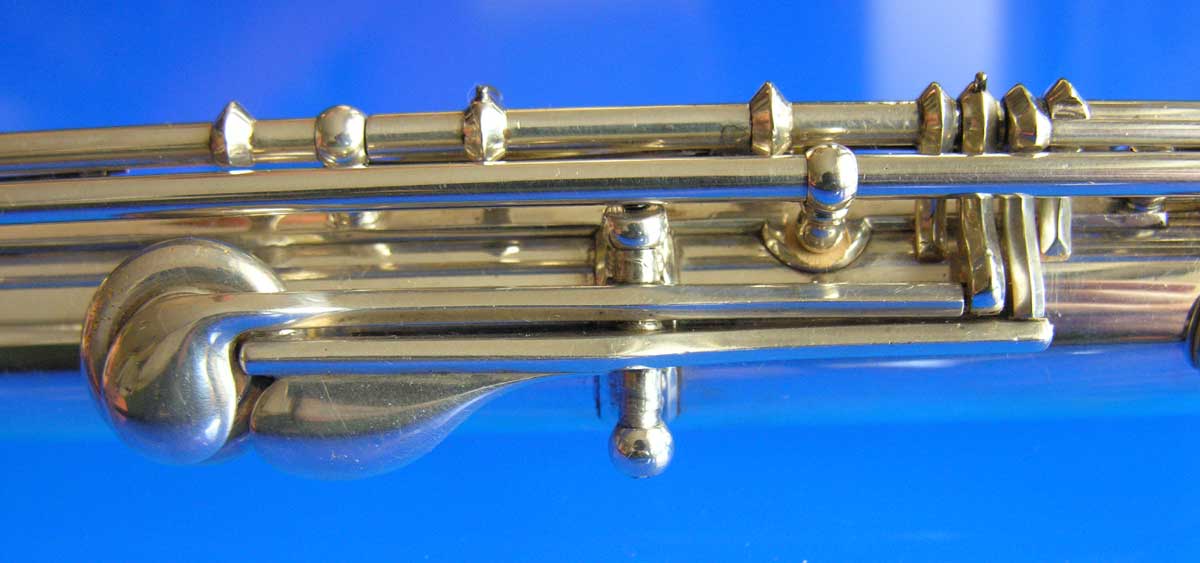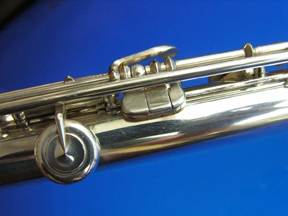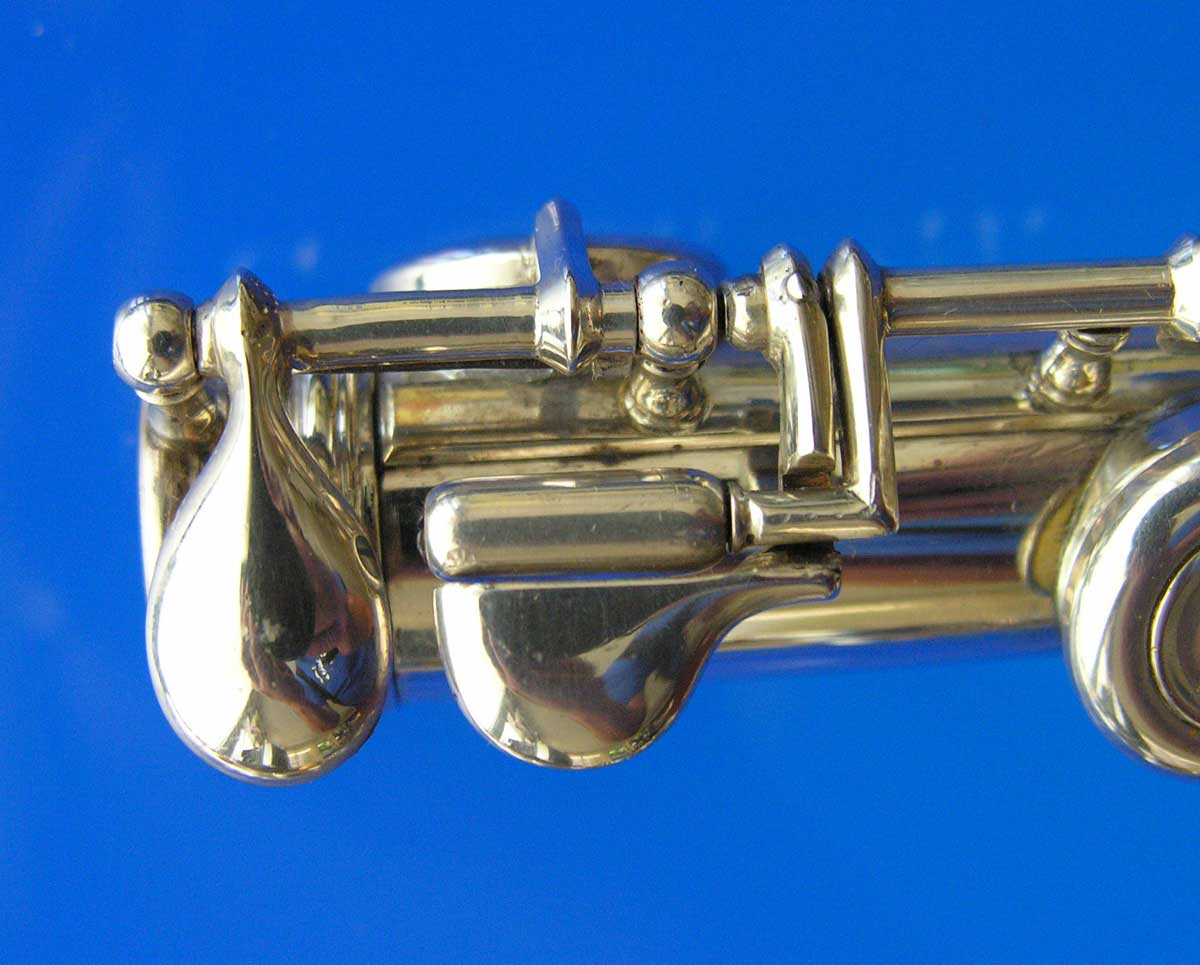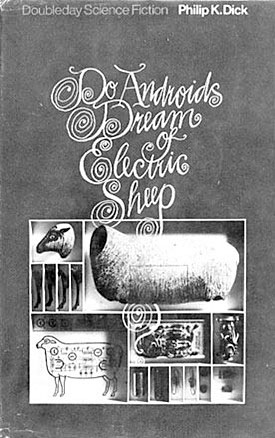Successful Record Powered by iPhone 3GS and MotionX-GPS
HONOLULU, HI–(Marketwire – July 13, 2009) – The record for double-handing the Transpac yacht race from Los Angeles to Honolulu has been broken. At 4:38:35 a.m. Hawaiian Time today, Philippe Kahn and Mark “Crusty” Christensen, crossed the Diamond Head finish line in the Open 50 Pegasus, completing a record time of 7 days, 19 hours, 38 minutes, and 35 seconds, shaving two and a half days off the previous record of 10 days 4 hours, 4 minutes and 49 seconds was set in 2001 by Howard Gordon and Jay Crum also with an Open 50, the Etranger.
The Transpacific Yacht Race is one of the longest-standing and most prestigious ocean races in the world covering 2,225 nautical miles from Los Angeles to Honolulu.
“Double-handing the Open 50 to Hawaii is one of the highlights of my year,” stated Kahn, a noted technologist and the creator of the camera phone. “I love being out in the open Ocean. Once we’re out there, that’s all that matters — we had our sites on the record and we beat it. Mark and I are a perfect team. We work together at MotionX and we race together as partners on Pegasus across the Pacific. Mark’s experience as one of the world’s greatest offshore sailors is invaluable. Transpac is a navigator’s race and that plays into our strength.”
The Race Boat and the Team
The Pegasus 50 is an Owen Clarke-designed Open 50 acquired by Pegasus Racing in 2007. After an extensive refit, it launched in San Francisco. The Pegasus Racing Team has spent countless hours training, racing, and preparing the boat for this most difficult challenge from its base in Santa Cruz, Calif.
Kahn and Christensen, a formidable team both on and off the water, are colleagues at Fullpower, the maker of MotionX. When not at sea, Christensen is the vice president of engineering at Fullpower. While Philippe has raced the Trans-Pacific course 11 times with six wins, he first attempted a double-handed Transpac record in 2007. This is Philippe’s eleventh Trans-Pacific race and his sixth win. Mark has raced around the world four times and won twice.
“Congratulations to Philippe and Crusty for sailing hard, smashing a record, and doing a great job sharing the experience with the race organizers and the rest of the world,” said Lynn Fitzpatrick of Transpac 09. “The Pegasus team and their story added tremendously to the regatta and everyone’s experience. MotionX proved itself in so many ways.”
Race Chronicle: Fast, Wet, and Wild
As race day approached the skippers scour the weather information, and see that the weather is shaping up nicely. The team would get a fast and windy race, just what they needed for a shot at the double-handed record. They set sail with equipment that includes two iPhone 3GSs loaded with MotionX-GPS to navigate from start to finish and to allow them to instantly document their journey via text and video posts to Philippe’s blog on pegasusracing.com, Facebook, and YouTube.
Before the Transpac started, the sailing team met its first test when their hydraulics to cant the keel failed on the way to the starting line. The well-prepared Pegasus team managed to partially fix the hydraulics in the 50 minutes remaining prior to the start, which enabled the use of one of the two hydraulic rams for the keel. Though not ideal, it was enough to start the race on time.
Clouds covered the sky for the first days at sea with winds steadily building to 22-24 knots. The Pegasus accelerated to 17-20 knots of boat speed and headed west into the deep black of night. At about 1:00 a.m. Pacific Time as he was on the helm, Philippe was suddenly hit directly in the chest by a flying fish. Philippe made a leap to save the fish, just as the sea jerked the boat violently to the right. The fish was successfully rescued, though the sailor was a bit battered and a little bloody. Philippe learned to avoid going to the rescue of strange large flying fish.
The next few days brought on a few sail changes to take advantage of the wind velocity and direction. With MotionX-GPS running on their iPhone 3GS they could instantly know their VMG (Velocity Made Good) or the rate at which they were moving towards the Hawaiian finish line. Excitement grew as they realized that if they could keep up their current VMG of 12.6 knots over the next seven days, they would smash the double-handed record and meet their goal.
Mid-race days and nights were filled with periodic heavy squalls bringing a mixture of strong winds and rain. Riding the puffs from these squalls was extremely important to team Pegasus in order to keep their boat speed high and push for the double-handed record.
As the sun set on the sixth day the team knew it was decision time. Philippe looked at MotionX-GPS in combination with other instruments and weather patterns to determine when to jibe onto port to take advantage of the veering trade winds on their approach to Honolulu.
With Diamond Head in their sights, day seven welcomed the duo with a series of 30-knot squalls and lots of fast and wet sailing. The team was really making great progress, but at around 8 p.m. the mighty Pegasus lost all electrical power and communications. “There was a smell of an electrical fire, so we got out the extinguishers,” said Philippe. “There is nothing worse than a fire on a boat.”
The pair began troubleshooting to find the source of the electrical issue as they continued to sail full steam to Honolulu. While electrical problems are bad, the situation provided a platform for MotionX-GPS to shine. With nothing more than enough juice to send messages via e-mail, the two-man boat navigated through the darkness with flashlights, a mechanical compass, and handheld iridium and iPhones running MotionX-GPS. Co-skipper Kahn posted on the experience in his blog, “Sailing fast. Using the brail method.”
Finally, just after 5 a.m., the sailors were able to partially charge the batteries with a temporary fix. They continued to hand steer and gained just enough power throughout the final day to jibe the keel three more times. Kahn and Christensen carried their speed right down Molokai Channel in high winds to finish just before dawn on Monday in record double-handed time.
About the Transpac
With 44 races starting in 1906, the Transpacific Yacht Race to Hawaii is one of the longest and oldest ocean races in the world from Point Fermin near Los Angeles to Diamond Head in Honolulu. The race was inspired by King Kalakaua, the revered Hawaiian leader of the late nineteenth century who believed that such an event would strengthen the islands’ economic and cultural ties to the mainland. For more information, including results and position reports, visit www.transpacrace.com.
About Pegasus Racing
Pegasus Racing is a world-class one-design sailboat racing team made up of some of the finest sailors in the sport. Led by Philippe Kahn, successes range from winning the Melges 24 Worlds twice (2003 and 2007) to winning the Transpac (2001 and 2003) and setting both the Pacific Cup double-handed (2008) and the Transpac double-handed (2009) records. For more information on Pegasus Racing visit pegasusracing.com.
About Fullpower/MotionX
Founded in 2003 by Sonia Lee and Philippe Kahn, Fullpower’s mission is to put motion-sensing in every mobile device. As the leader in mobile sensing solutions, Fullpower is building on its expertise in wireless sensor technology to deliver unique, interactive motion-sensing applications. MotionX solutions are designed and developed in Santa Cruz, Calif.
Important Links:
Pegasus Racing: pegasusracing.com
